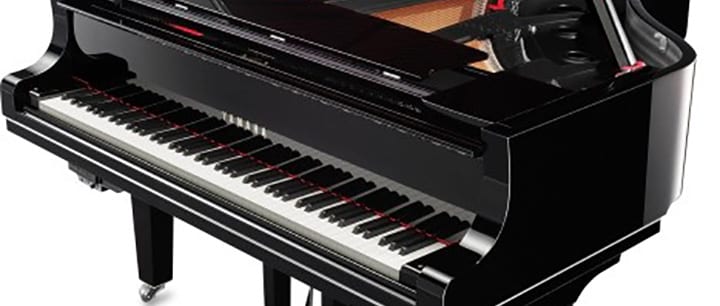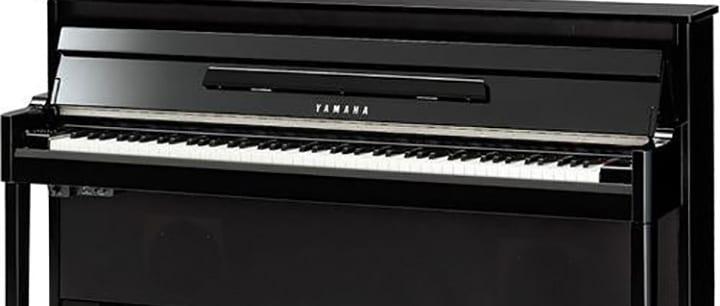As technology progresses, so does the music industry. Here, Tulsa, OK teacher Chris F. explores Yamaha’s latest contribution to the world of music-making…
The acoustic piano’s design has remained relatively unchanged for centuries. The electronic keyboard, on the other hand, has had a rich and transformational history over the years, as technology has evolved and improved. What started with the “Denis d’or,” an instrument developed in 1793 with 700 strings that were temporarily electrified to enhance their sonic qualities, later on gave way to electronic combo organs, the portable synthesizer, and finally the modern-day keyboard that many beginner piano players learn to play on.
Today, many companies continue to advance these instruments. Yamaha, for example, has recently achieved the impossible. The Japanese company’s piano division recently demoed the U1TA PE Professional Upright Piano, a revolutionary approach to digital keyboards, at the 2014 NAMM show.
Yamaha’s TransAcoustic – A New Approach
The U1TA (otherwise known as the TransAcoustic, which translates to “beyond acoustic”) looks like a normal upright piano with a small electronic module attached underneath. What makes this piano unique is that it bridges the gap between acoustic and digital piano playing. The U1TA PE utilizes “TransAcoustic” technology, Yamaha’s new method of using the piano’s soundboard as a speaker for the onboard digital sounds stored in the attached module. This means that the piano keyboard notes are produced via the soundboard as digital sounds. The acoustic/digital process also causes the strings and the entire piano to resonate with these digital sounds.
The U1TA has three main modes. First, the piano can be played completely acoustic without the electronic module on. Second, the electronic module can be activated, combining digital sounds with the acoustic piano tones. And third, the piano can be silenced, prohibiting the hammers from touching the strings and turning the instrument into a digital keyboard or midi controller.
The real miracle that the U1TA has accomplished is the marrying of the acoustic and the digital. What makes an acoustic piano a treat to play is the enveloping sound that resonates the instrument and the body, nuances that a digital piano simply cannot offer. The U1TA brings this acoustic character to its digital sound library, including various electric and acoustic pianos, harpsichords, and pipe organs. Despite this incredible technology, the lackluster digital library is too generic to live up to its authentic sound production. The grand piano sample might be the only worthwhile voice that comes with the U1TA. Supplementing the digital library with quality tones down the road, however, should be easy enough.

The Future of the TransAcoustic
There is no doubt that once this technology can be more cheaply manufactured and installed on existing pianos, it will redefine the concept of the acoustic piano. The addition of sought-after digital tones, such as specific piano modelers, Hammond tones, and Rhodes tones to the digital library would make the U1TA the ideal acoustic piano. But everything comes with a price. At $16,000 the U1TA won’t be a reasonable purchase for the average player. The real value of the U1TA PE Professional Upright Piano, however, is how it could redefine the art of piano making.
Readers, what do you think of this new technology? What’s next in the evolution of keyboards and pianos? Let us know your thoughts by leaving a comment!
 Chris F. teaches guitar, piano, music theory, and more in Tulsa, OK. He has been active in collegiate percussion ensembles, marching and concert bands, various choirs, chamber music groups, jazz combos, an award winning jazz big band, bluegrass combos, drum and bugle corps, and private lessons on several instruments, as both a section leader and as a teacher. Learn more about Chris here!
Chris F. teaches guitar, piano, music theory, and more in Tulsa, OK. He has been active in collegiate percussion ensembles, marching and concert bands, various choirs, chamber music groups, jazz combos, an award winning jazz big band, bluegrass combos, drum and bugle corps, and private lessons on several instruments, as both a section leader and as a teacher. Learn more about Chris here!
Photo by Yamaha Inc., faz
Suzy S.

